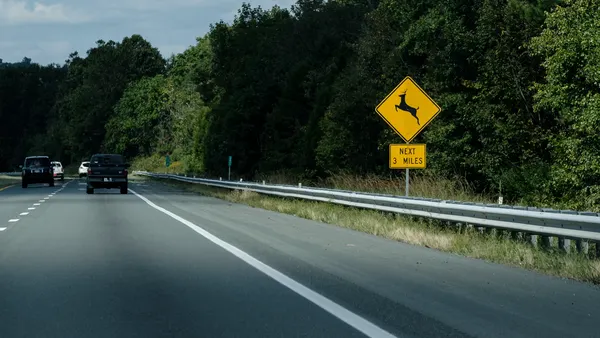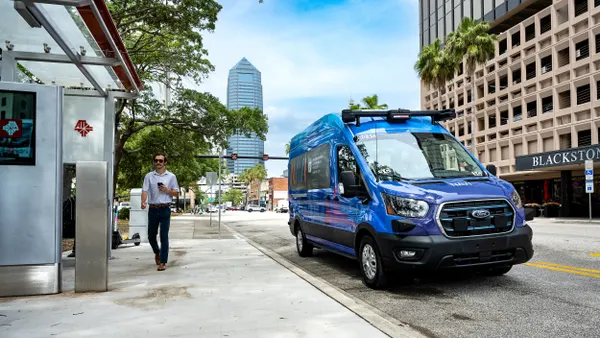Dive Brief:
- The Washington Metropolitan Area Transit Authority (WMATA) introduced its first Energy Action Plan to reduce energy use, greenhouse gas emissions and long-term operating costs.
- WMATA will invest $65 million over five years in energy-efficient technology, operations modernization and innovation promotion. Specific initiatives include developing an electric bus deployment strategy, designing its new headquarters to meet LEED platinum standards and designing the new Potomac Yard Metrorail station in Alexandria, VA to be the first LEED-certified transit station in the country. Starting this week, WMATA's online trip planner shows riders how much their transit trip contributes to reducing the region's carbon footprint.
- The agency estimates the plan will help to limit its energy cost growth to 1.7% annually, with net energy savings from the five-year plan reaching the equivalent of taking 35,000 vehicles off the road each year. It estimates the plan will lead to $16 million in energy cost savings each year, and another $13 million in savings on operations and maintenance by 2025. In a statement, WMATA general manager and CEO Paul Wiedefeld said the agency is "making the right choice for the environment by changing the way we do business."
Dive Insight:
WMATA's energy plan makes Washington, DC the latest city in a growing group to commit to reducing transportation energy use and emissions. Many cities' strategies center on electric buses; Los Angeles and Chicago are among those aiming to transition to complete bus fleet electrification over the next 10 to 20 years.
The agency says it has already undertaken some projects that will further reduce its energy use. LED track bed lighting has been installed at about half its stations and upgrades are planned for all of the remaining 48 stations over the next two years. The regenerative braking system on its new railcars recovers energy from trains as they decelerate and feeds it back to the traction power system. Plus, the net-zero water treatment facility uses solar panels and gravity-fed treatment tanks to provide the energy to treat water in subway tunnels and safely return it to the environment.
Work to approve and design the Potomac Yard Metrorail station has been going on for decades in some form, but it took on new importance last fall when Amazon announced it would build its HQ2 nearby. As part of a deal with Amazon, state-level officials in Virginia have agreed pay to construct a second station entrance, WTOP reports. The influx of workers to that area just from Amazon is expected to generate a greater density of employees during business hours, which contributes to additional localized energy use and emissions. Designing this station with the goal of becoming LEED-certified should put WMATA on a track toward energy efficiency from the get-go, rather than having to retrofit equipment and alter operations in the future.











